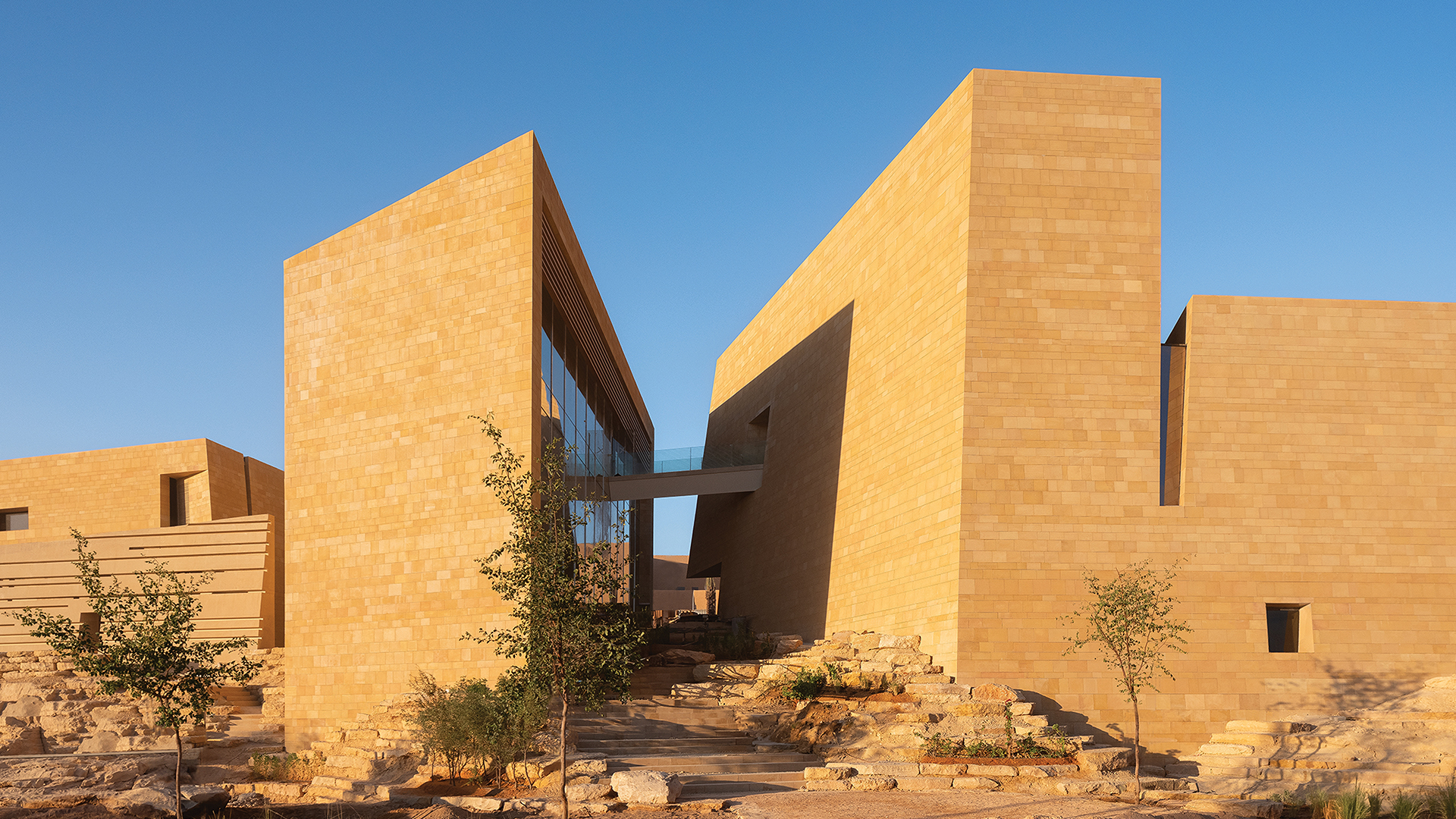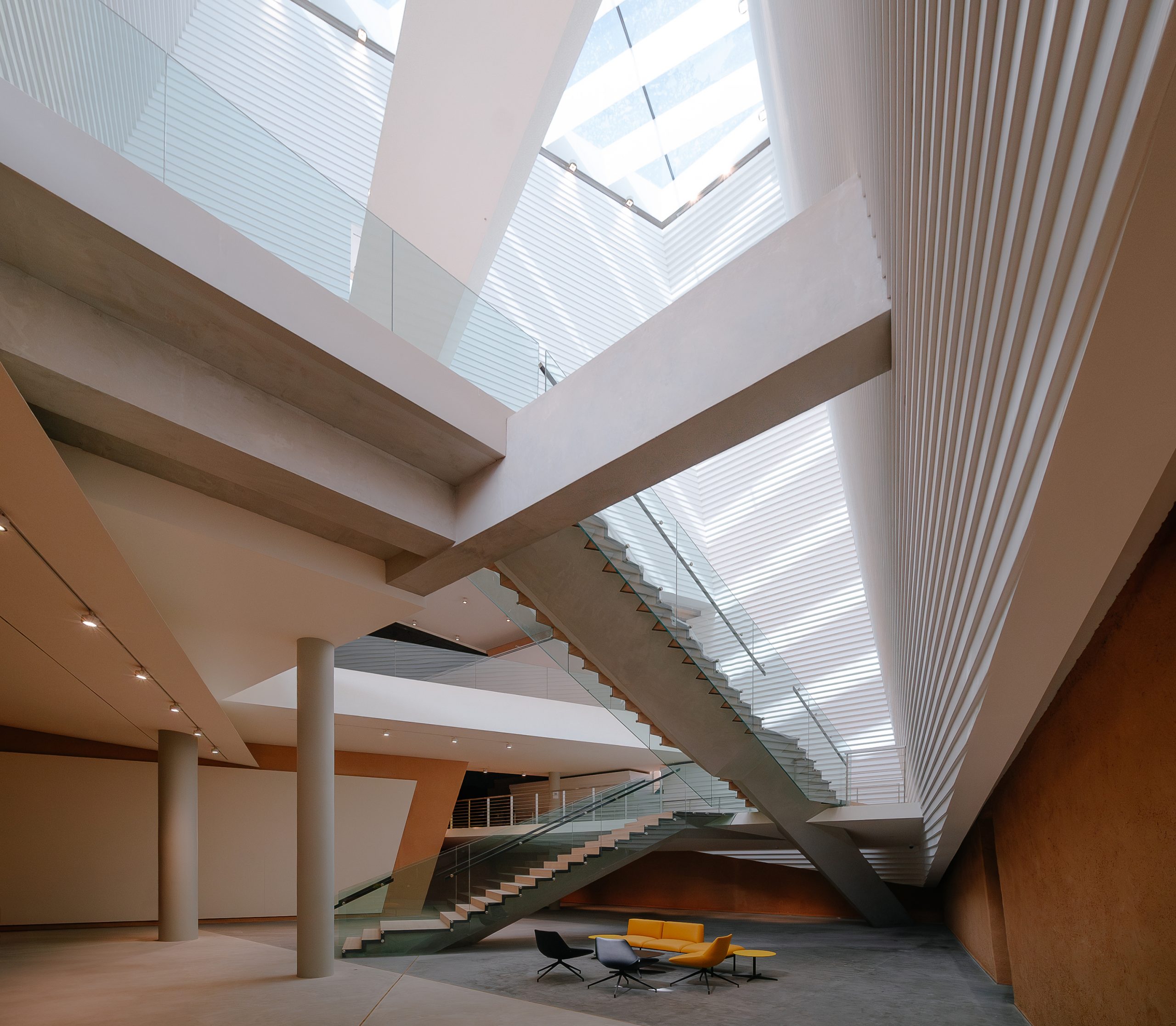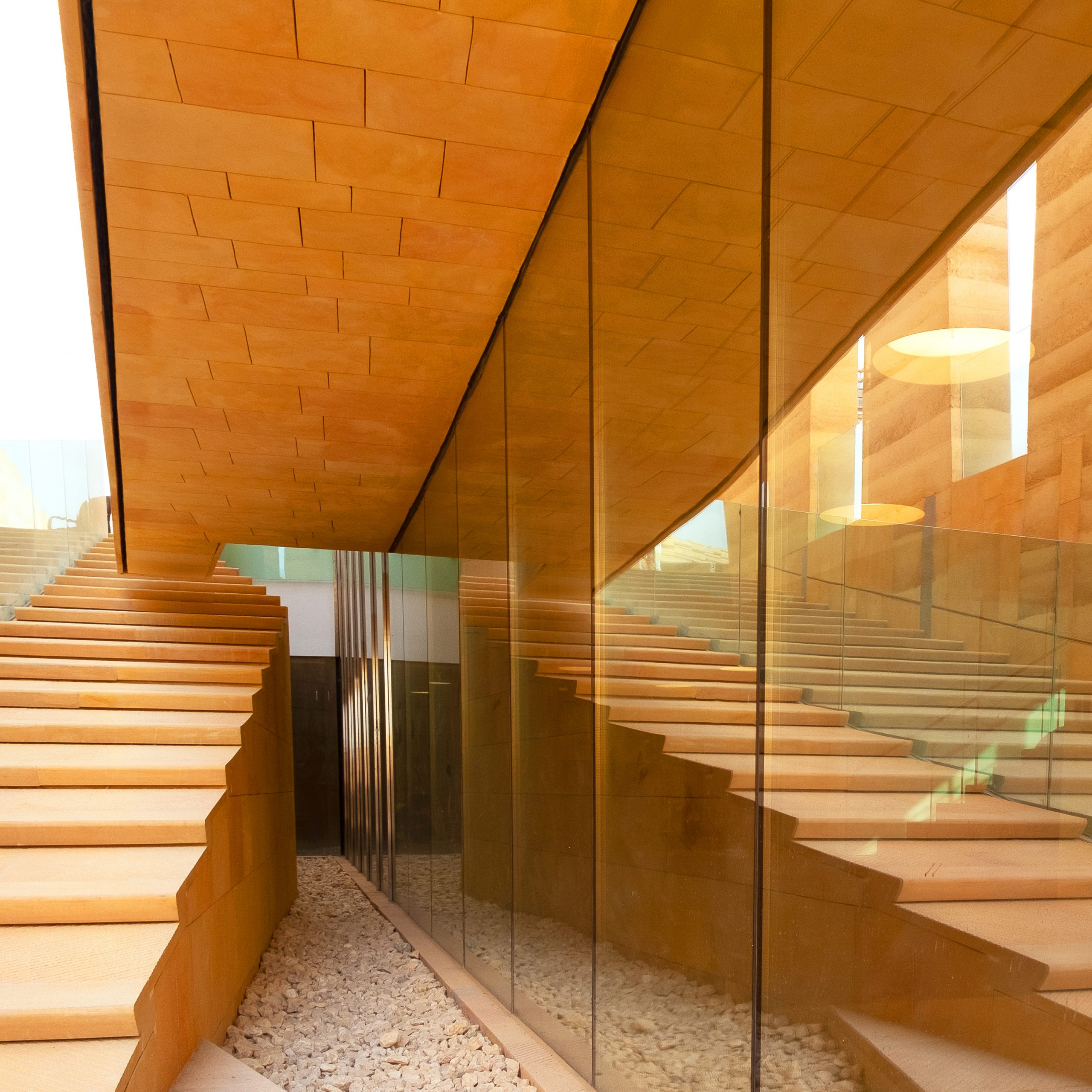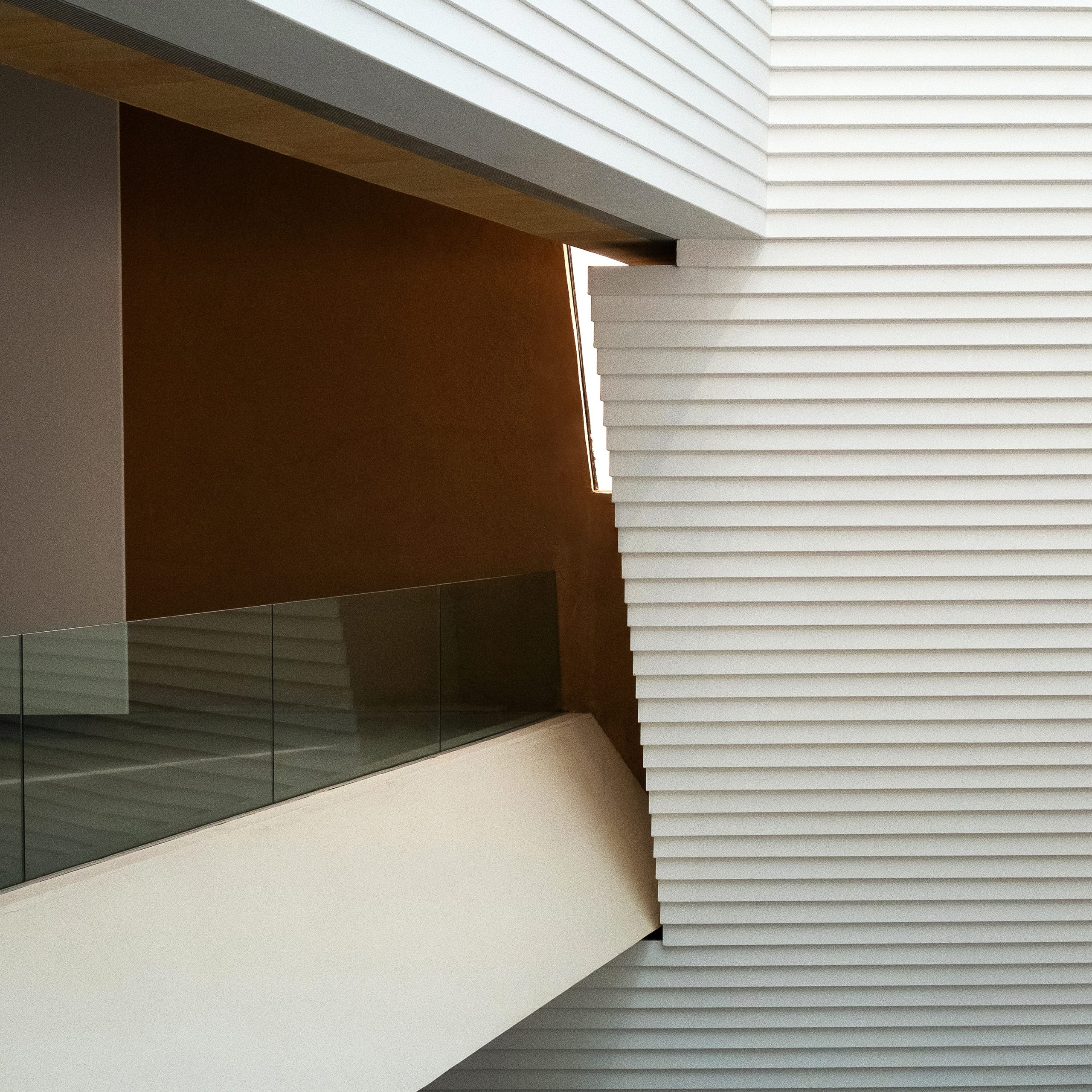Copyright © 2025 Motivate Media Group. All rights reserved.
The Design behind Diriyah Art Futures
Designed by Schiattarella Associati, Diriyah Art Futures ushers Saudi Arabia’s architectural heritage into a digital future

Emerging from the desertscape, Diriyah Art Futures is a pioneering destination dedicated to public engagement with new media, particularly digital arts. Spanning 12,000 square metres, it serves as an exhibition space and a hub for ateliers, research labs, education and artist residencies, welcoming both local and international creatives. What is particularly striking about this project is its juxtaposition of a future-facing concept with the historical and cultural backdrop of Diriyah, a mud-brick city rooted in Saudi Arabia’s aesthetic traditions. Situated next to At-Turaif – the ancient capital of Najd and a UNESCO World Heritage site, often regarded as one of the most significant archaeological sites of the Arabian Peninsula – Diriyah Art Futures translates the values of Najdi architecture into a modern visual language.

For Schiattarella Associati, the challenge was to honour the historical significance of the site while establishing Diriyah Art Futures as a forward-thinking cultural hub. “We embraced the challenge of creating a new human dimension in a territory layered with history,” explains Andrea Schiattarella, CEO of Schiattarella Associati. He emphasises the importance of not only responding to the physical environment but also creating a dialogue with the site’s memory, ensuring that the architecture resonates with both tradition and innovation. “Digital art demands that the relationship between container and content is elevated,” Schiattarella continues. While the museum has always been both a host and a narrator of its content with digital art, the container itself now becomes an active participant in the experience. “Digital art evokes estrangement, excitement and engagement,” he says. “The building must reflect these qualities, offering itself as an open palimpsest [that is] rich with exhibition possibilities.”
The resulting structure seems to rise naturally from the earth. Perched atop a cliff overlooking a wadi, the centre’s angular lines contrast with the soft, undulating curves of the desert. Its material palette – locally sourced stone, raw earth and mud plaster – evokes the architectural traditions of Najd and the broader desert vernacular. A façade of full-length cut glass reflects the surrounding landscape, filtering and refracting light and shadow in a way that echoes the natural rhythms of the desert, creating a dynamic visual effect. Diriyah Art Futures occupies a space between two contrasting elements: the region’s historic core, with its narrow streets and low-rise buildings, and expansive agricultural land. One of the key objectives, according to Schiattarella, was to restore continuity between the wadi and the upper cliff, merging the agricultural landscape with urban living. “We conceived a complex, rather than a single building, to minimise the architecture’s impact on the natural environment,” he notes. The spaces between the structures evoke the intimacy of ancient dwellings, with winding streets and compact squares that invite exploration and social connection.


Sustainability was a guiding principle for the design. Shaded areas encourage natural airflow, lowering temperatures between the buildings and protecting pedestrians from the intensity of the desert sun – echoing the wind tunnels of traditional Arabian architecture. This nod to the past is balanced by state-of-the-art features, including a geothermal cooling system, solar-optimised design and a rainwater collection and reuse system. The project has also prioritised cultural preservation. “As architects, we have a great responsibility today,” says Schiattarella. “Globalisation is flattening cityscapes and architectural languages. Our challenge is to depart from the value of cultural diversity. For us, this meant experimenting with architecture that moves beyond shapes and signs, from tradition to the essence of local culture, transforming it into contemporary meanings.”
As a centre for digital art, research, innovation and education, Diriyah Art Futures exemplifies how modern architecture can engage both cultural memory and forward-facing vision. More than just an architectural landmark in Saudi Arabia’s rapidly evolving built environment, it forms a site where tradition and innovation can converse.
Read more architecture features here.
The Latest
Textures That Transform
Aura Living’s AW24 collection showcases the elegance of contrast and harmony
Form Meets Function
Laufen prioritises design, functionality and sustainability in its latest collections
Preserving Culture, Inspiring Creativity
Discover the Legacy of a Saudi Art Space: Prince Faisal bin Fahd Arts Hall explores the Hall’s enduring influence on the cultural fabric of Saudi Arabia
Channelling the Dada Spirit
Free-spirited and creative, The Home Hotel in Zurich injects a sense of whimsy into a former paper factory
id Most Wanted- January 2025
Falaj Collection by Aljoud Lootah Design
Things to Covet in January
identity selects warm-toned furniture pieces and objets that align with Pantone’s colour of the year
Shaping the Future of Workspaces by MillerKnoll
Stacy Stewart, Regional Director Middle East & Africa of MillerKnoll discusses the future and evolution of design in workspaces with identity.
Shaping Urban Transformation
Gensler’s Design Forecast Report 2025 identifies the top global design trends that will impact the real estate and built environment this year
Unveiling Attainable Luxury
Kamdar Developments has launched 105 Residences, a new high-end development in Jumeirah Village Circle.
The Muse
Located in the heart of Jumeirah Garden City, formerly known as ‘New Satwa’, The Muse adds to the urban fabric of the area
Cultural Immersion Meets Refined Luxury
The Chedi Hegra opens its doors in AlUla’s UNESCO World Heritage Site
Redefining Coastal Luxury
Sunshine Bay on Al Marjan island combines seaside views, exceptional design, and world-class amenities to create a unique waterfront haven
















